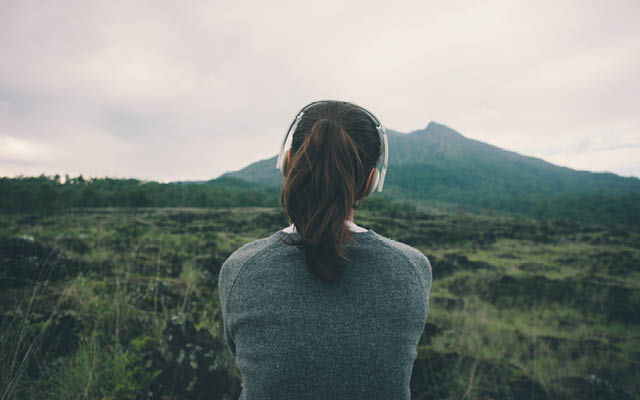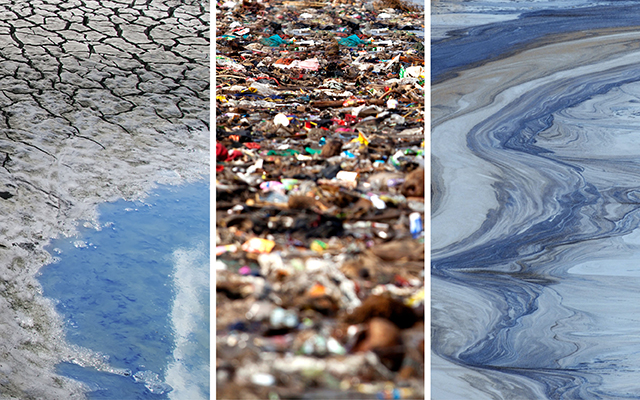If you live in an urban area, chances are that you gaze up into the timeless wonders of the night sky and see . . . nothing. The moon, maybe, but beyond that, just an amorphous, featureless gray. No stars, no constellations, no planets, not even satellites.
Most people think of “physical” pollution to the air, land, and water as the chief concern, and that’s fair, but light pollution is an issue all its own. Humans create a smog of light that’s blocking the rest of the cosmos from view.
“Even rural areas are now subject to this nighttime glare,” writes astrophysicist Kelsey Johnson, PhD, in a 2019 New York Times opinion piece. “In the United States, east of the Mississippi there remain only two very small pockets of truly dark nighttime sky — one in northern Minnesota, the other in northern Maine — that allow us to see the night sky as our distant ancestors did.”
What are the causes of light pollution? What are the effects on the environment and on us? And what can be done about it?
Losing the Night
The amount of artificial nocturnal light has been growing globally by 2.2 percent per year, according to National Oceanic and Atmospheric Administration satellite radiometer readings. This is fueled by our swelling population and increasing demands to illuminate roads, parking lots, sidewalks, buildings, properties, and airports at night. At this rate, our light pollution will double within the next 50 years, experts warn.
Lighting up the night costs Americans $3 billion annually — not including the toll generating the required electricity exacts on our climate. And according to recent research by the Institute of Electrical and Electronics Engineers, efforts to make outdoor lighting more efficient by swapping energy-intensive sodium lamps for LED lighting not only isn’t reducing light pollution, it’s encouraging people to use more lighting.
Plus, we are now placing light out in space itself, further blocking our view of the cosmos. In 2019, commercial aerospace company SpaceX launched its first 60 internet communications satellites, part of the Starlink system projected to include 12,000 satellites orbiting Earth. Currently, 2,000 spacecraft circle the planet; when the Starlink system is completely deployed, satellites may outnumber visible stars.
Existential Costs
Light pollution affects wildlife and humans. The bright night sky interferes with animals’ feeding, breeding, and migratory instincts. Even ocean dwellers, such as sea turtles, are disrupted in their nesting: Brightly lit beachfronts can cause disoriented hatchlings to wander inland, where they die of dehydration and predation.
Excessive nocturnal light can desynchronize circadian rhythms and melatonin production in humans, resulting in insomnia, depression, cardiovascular disease, even cancer. In 2012 the American Medical Association recognized artificial night lighting as a carcinogen. It has since adopted resolutions supporting the reduction of light pollution and promoting the use of energy-efficient, shielded outdoor lighting.
Masking the wonders of the heavens exacts a psychological toll as well. Studies show that feelings of awe, reverence, and veneration move us to understand our place in the universe — just how small we really are. In this way, says International Dark-Sky Association director Ruskin Hartley, light pollution has an “existential cost.”
“A starry night is not only a thing of beauty; it is a visceral reminder that we are part of the enormity of the universe,” he says.
Johnson agrees: “There is something essential about being outside with the universe in your face that leads people to open up and ponder big questions in a humble way. I worry that as we spend less time looking at the night sky, our worldview shrinks — it is easy to forget that we are part of something much bigger than ourselves.”
Dim the Glow
Seeing stars has become so rare, it now needs protecting. In 2020, Voyageurs National Park in northernmost Minnesota was certified as an International Dark Sky sanctuary, one of only 14 such refuges in the world. This preservation effort comes thanks to the International Dark-Sky Association (IDA), which has worked to safeguard nocturnal darkness in 164 communities, parks, and reserves in 22 countries.
To help preserve the night, you can start by learning more about light pollution and support advocacy groups like the IDA (www.darksky.org), the European Union’s Loss of the Night Network (www.cost-lonne.eu), or citizen-science projects like Tatort Streetlight (tatort-strassenbeleuchtung.de). Below are a few other things you can do.
Turn off lights — the cheapest, most obvious, and most effective way to reduce light pollution. There’s a time and place for outdoor lighting, such as illuminating nighttime activities, but many of us burn porch and “safety” lights because it gives us a sense of security. Yet there’s little data to support the idea that outdoor lighting reduces crime, says IDA director Ruskin Hartley. “People wrongly assume that more light at night will make us safer. Time and again, studies have shown this is not the case.”
Turn on lights when you need them, or use portable lighting, such as flashlights or headlamps.
Appeal for better streetlamps. Many cities still use expensive and light-polluting sodium-vapor streetlamps; petition your municipality or utility company to replace them with modern LED lighting.
Replace outdoor lights with smart, low-glare fixtures. The IDA evaluates fixtures for glare and efficiency: Look for the IDA seal of approval. Or seek out a company such as Starry Night Lights, which specializes in low-pollution lights; Core Glow stones emit only small amounts of light.
And use the lowest illuminance necessary. LED has the advantage of being adaptive so you can reduce brightness.
Use motion sensors on essential outdoor lamps to light up porches, walkways, and driveways when you need to move around after dark. They’ll quickly pay for themselves.
Shield your lighting so it’s aimed downward rather than up into the sky, which offers little illumination while polluting the night. Use lamp shields to cover the bulbs completely.
Swap out conventional high-energy bulbs for efficient outdoor compact fluorescent lamps (CFL) and LED floodlights. Low-wattage, solar-powered walkway lamps are ideal replacements for area lighting. Efficient lighting may not contain all those stray rays, but it will lower your monthly electric bill and reduce your power company’s carbon emissions.
WEBEXTRA
Q&A With Ruskin Hartley
The Right to See the Stars
Being able to gaze at the stars seems like it should be a given, but light pollution is blocking our view of the heavens. In most urban areas around the globe, the stars and planets are no longer visible in the night sky.
The International Dark-Sky Association (IDA) is striving to preserve the darkness and reduce light pollution. We spoke with IDA executive director Ruskin Hartley on the group’s efforts and why the right to see the stars is so important.
Experience Life | We can see smog and trash on the ground but rarely think about artificial lighting polluting the night sky: What are the hurdles to dimming light pollution’s glare?
Ruskin Hartley | The biggest challenge that IDA faces is addressing the pervasive narrative that light is good, darkness is bad, and that you need to choose one or the other. There is a misperception that we need to choose between light at night or darkness. From the very start of humanity, we have been drawn to light at night. For millennia this was fire and candlelight. This warm light was comforting, and we continue to be drawn to it. Every new lighting technology has made it easier and cheaper to introduce more light to the world at night.
People wrongly assume that more light at night will make us safer. Time and again, studies have shown this is not the case. Much of this is wasted, poor-quality light that disrupts the natural cycle of night and day. Far from enhancing the human environment, these overly bright and very white lights cause glare and actually reduce our ability to see.
We imagine a future where quality light enhances the human environment while protecting our view of the night sky overhead. International Dark Sky Places are examples of this around the world.
EL | Why do you feel being able to see the stars is important to humans?
RH | A starry night is not only a thing of beauty, it is a visceral reminder that we are part of the enormity of the universe. If a whole generation loses that sense of connection, I believe our species will be less equipped to handle the many challenges we face. Many of the challenges our planet faces, from the climate emergency to wildlife extinction, arise from our focus on our immediate needs. Seeing the grandeur of the universe with our own eyes is a reminder of the unimaginable space and time that we are part of. It’s hard not to be humbled and to have your perspective changed when presented with that picture.
This article originally appeared as “Night Light” in the June 2021 issue of Experience Life.





This Post Has 0 Comments